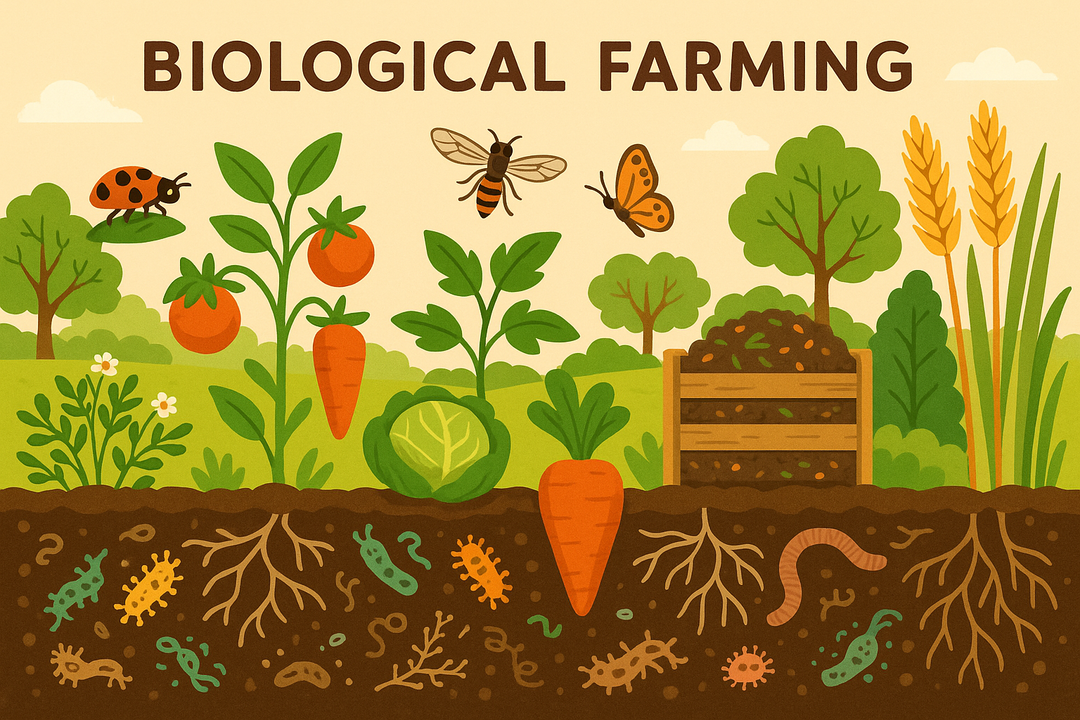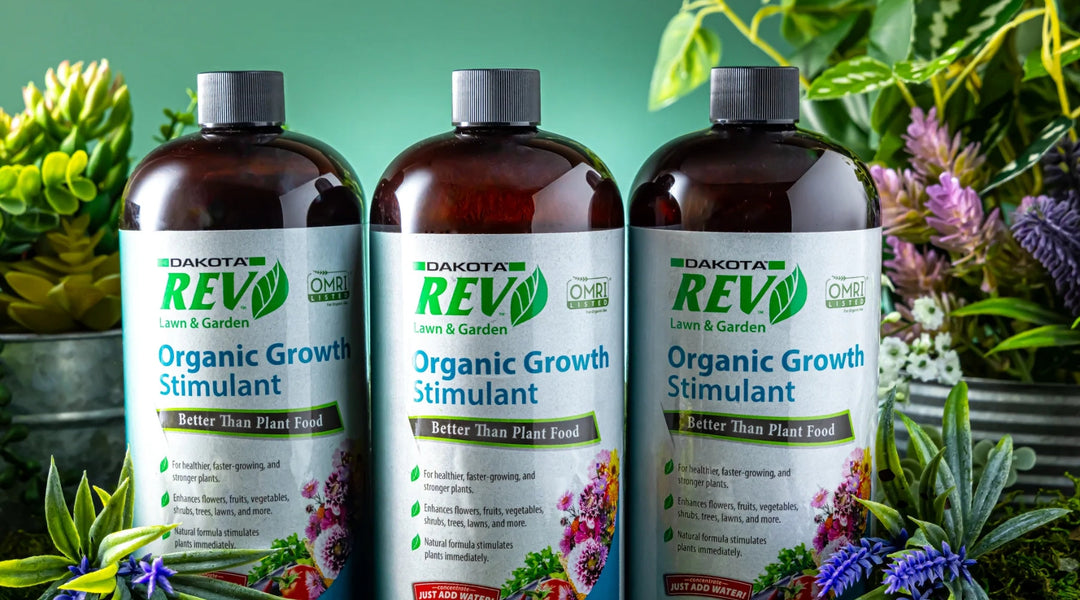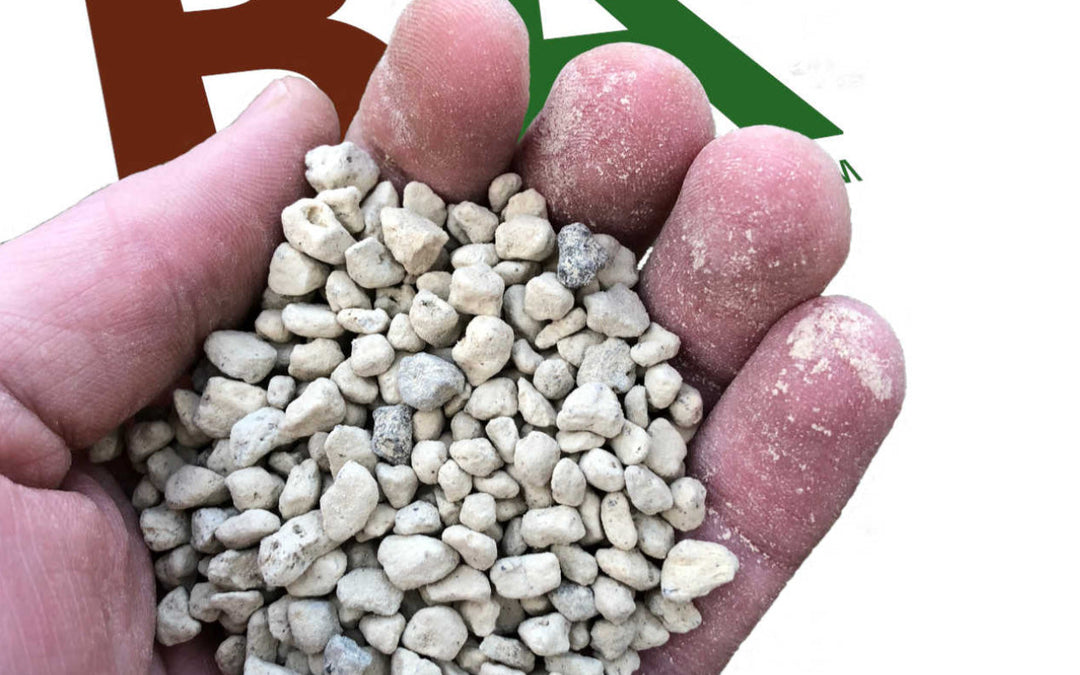The Importance of Soil Nutrition
Whether you're embracing your green thumb with a backyard garden or operating your family farm with thousands of acres, soil nutrition can make or break your agricultural adventure. Thankfully, naturally bad soil won't keep you from finding success as long as you know how to supplement your existing dirt with the soil fertilizer it needs to help your plants thrive.
This blog will break down everything you need to know about soil, including its physical and chemical properties, the importance of organic matter, soil testing, plant nutrition, lawn fertilizer, and how to find the best fertilizer for your needs.
The Difference Between Dirt and Plant Soil

Although you may think of it as dirt, planting soil is a living, breathing thing made up of liquids, solids, and gasses. Healthy soil plays a critical role in human nutrition, healthy plant growth, and water filtration. A soil that is considered healthy is also better able to withstand natural disasters, such as floods, droughts, and fires.
According to the University of Maine, soil has 4 primary purposes:
- It serves as a home for insects, fungi, burrowing mammals, bacteria, and other organisms.
- It provides a strong foundation for infrastructure, including roads, buildings, and bridges.
- It helps filter water and recycle raw materials.
- It acts as a natural soil and lawn fertilizer to support plant growth.
How Does Healthy Soil Contribute to Plant Growth?
For plant growth, in particular, soil is crucial for many things. For starters, it successfully anchors root systems, providing stability to the plants as they grow upwards and outwards. It also provides the oxygen that living cells need - in between each soil particle is air, which helps the plants break down sugar and create the energy they need to survive and thrive.

In addition to oxygen, the spaces between the soil particles also contain water molecules. This water helps support cell size to prevent wilting, aids in photosynthesis, transports nutrition throughout the plant and helps provide temperature relief as it evaporates from the leaves. And with good soil, roots are insulated when it is very hot or cold, which helps protect the plant against damage due to harsh conditions.
Nutrients, whether that is natural or through the addition of soil fertilizers, help provide the plants with the food they need to grow healthy and strong. Without healthy soil, plants wouldn't be able to sustain themselves. Thankfully, we can add different types of soil fertilizer to create the best environment possible for plant and lawn growth.
What Is Soil Made From?
Soil is made up of two main components: organic matter and minerals. Minerals in soil either come from the rock below or are moved to the area by water or wind. The minerals are identified by their texture, or the amount of clay, silt, and sand in a specific mixture. These terms don't define the type of mineral but instead allow us to classify each by the size of the particles.
Soil Particle Sizes
- Clay is the smallest of the three, with particles so small that they are only visible using an electron microscope. Clay soils are low in air concentration, challenging to till, and take a longer time than other particles to warm up after cold weather. However, clay holds water better than sand and is less susceptible to erosion.
- Sand is the largest of the particle sizes and is the most known to people. Individual grains can be distinguished by the naked eye or with a hand-held magnifying glass. For those looking for the best aeration and drainage, sand is the way to go. The substance also tills well and warms up quickly when spring arrives. However, the particles don't retain nutrients or water well and are more prone to erosion.
- Silt is the size between sand and clay. To see the particles individually, you have to use a microscope, though not one as strong as is required to see particles in clay.
Particle Size Mixes

When purchasing soil, you'll commonly see something called loam. This term refers to soils that are a mixture of all three particle sizes. Loam isn't specific to a particular composition, however. When purchasing loam soil, it's essential to inspect the soil or look for explanations as to the ratio of particle sizes so that you can find the variety that works best for your needs.
For granule soil and lawn fertilizer, look for uniform particle size. Different types of grass need particles that are a specific size, so it’s important to do your research first. Here are the aspects you need to keep in mind when looking at lawn fertilizer granule size:
- Activity level on the grass or lawn
- Grass height
- Distribution of lawn fertilizer – smaller particles have a more thorough coverage area than larger particles
What Are the Properties of Soil?

In addition to particle size, the shape and arrangement of the soil particles play a significant role in when each type is the most useful. Properties of soil include pore space, structure, and the amount of organic matter.
Soil particles are loosely packed, and the space in between each particle is called pore space. These pores are what allow the soil to hold air and water. In clay, the pore spaces are very small, allowing very little space for air and water. Sand, on the other hand, has much larger pores, preventing water and nutrients from remaining within the soil for an extended amount of time and making it more difficult for plants to grow.
Soil typically contains between 30 and 60 percent pore space. Healthy, well-rounded soil has macro- and micropores, providing the ideal balance of water and air to remain in the soil. If you want good drainage, you want macropores, while micropores are helpful for water retention.
What is Organic Matter?
If you've ever read about fertilizer, potting soil, or gardening, chances are you've heard of organic matter. Organic matter is the remnants of living materials that break down and deliver carbon to soil as an energy source. Although this substance makes up only a small fraction of potting soils, its importance brings it to the forefront of conversations about plant nutrition and soil fertilizer. Regardless of whether your soil is healthy on its own, all gardens will benefit from the addition of soil fertilizer and organic matter on occasion.

3 Types of Organic Matter:
- Active organic matter
- Passive organic matter
- Slow organic matter
Active organic matter is ripe with living and active microorganisms – sort of like a natural soil and lawn fertilizer. Active organic matter makes up between 10 and 20 percent of the overall amount of organic matter in the soil. Active organic matter helps drive microbial activity by providing easy-to-digest nutrients that help boost microbial metabolisms.
Passive organic matter, also known as humus, is matter in which the decomposition of living materials has already taken place, creating more stable soil without any microbiological activity. This type is on the opposite end of the spectrum from active organic matter and does very little to provide fuel for the organisms in the soil. Although we think of decomposition as something that occurs pretty quickly, the process may take thousands of years.
Slow organic matter is in between active and passive organic matter. This material decomposes faster than passive organic matter but slower than active organic matter. Bones are an excellent example of slow organic matter, and they typically take decades to decompose.
What's the Difference Between Organic Material and Organic Matter?

Organic material is what breaks down to form organic matter. These materials can include manure, leaves, sticks, plant residue, compost, and other elements. As organic material goes through the decomposition process, it becomes an unstable material that changes mass and form.
Roughly 90% of organic material disappears during decomposition, which is why organic matter and soil fertilizer are so important. Soil formation can take up to 100 years, with only one inch of topsoil being produced in a century.
What is Soil Fertilizer?
In the simplest of terms, soil fertilizer is food for plants. Fertilizers support the natural health and fertility of the soil by supplementing nutrients that do not exist in the type of soil or have been removed by natural or man-made effects. The goal of soil fertilizer is to increase the production and yield of crops.
Soil fertilizers supply essential nutrients that plants need to grow. There are 16 elements that are critical to plants' success, including:

These nutrients play a crucial role in improving the health and success of crops by balancing the right amount of each compound with the characteristics of the soil.
3 Main Elements of Fertilizer:
- Nitrogen
- Phosphorus
- Potassium
When you see a bag labeled with three numbers, those are the amounts of each element contained within the soil fertilizer. The difference in element concentrations for soil and lawn fertilizers is one of the primary reasons that it's critical to do your research and test your soil before changing your soil's chemical makeup with mineral amendments.
Although it may seem like a no-brainer to sprinkle some lawn fertilizer on your grass when it isn't growing well, you could actually do more harm than good if the elements in the lawn fertilizer you choose aren't what your soil actually needs.
Importance of Soil and Lawn Fertilizer
Soil fertilizer can make or break a successful crop cycle. As the demands on our food supply chain increase, being able to adjust to accommodate the presented challenges can be the difference between a complete loss for a farmer and a productive crop yield.
The health of our soils has continued to decline, so supplementing existing dirt with a soil fertilizer can help with:
- Resilience against pests and bugs
- Water retention
- Faster and stronger root development
- Overall plant growth
Types of Soil Fertilizer
There are two main types of fertilizers: inorganic and organic. Organic fertilizer, like those made by Ferticell, is made from natural materials, such as plants and animal products. These types of soil fertilizer can be obtained from agriculture or industrial waste, manure from livestock, and municipal sludge because they help increase the amount of organic matter in the soil, change the chemical and physical characteristics of the soil, and support the growth of microbes. Inorganic fertilizers are either nitrogen- or phosphorus-based and use chemical methods to support improved plant growth.
Soil and lawn fertilizer is available in different varieties, including liquid, pre-mixed soil, and individual nutrients. In addition to general lawn fertilizer that will support the health and nutrients of your grass, these substances can also help provide better drainage.
Testing Soil Health
There is too much of a good thing when it comes to soil fertilizer. That's why you should always test your yard or garden before applying any lawn fertilizer or soil fertilizer. A soil test will show the pH and nutrient levels of your yard or garden and can help rule out nutrient issues as well as avoid the guesswork of under or over-fertilizing.
Most plants, vegetables, flowers, and grasses are most successful when grown in acidic soil with a pH level between 6.0 and 6.5. However, other varieties, like blueberries, azaleas, and gardenias, prefer a higher level of acidity. Investing in a soil test can help determine if you need to add a lawn fertilizer, supplement a specific mineral or nutrient, and where your plants will grow best.
Soil Testing Kits
You can obtain a soil testing kit from your local agricultural extension office, purchase one online, or use a microbiometer for at-home testing and analysis. Microbiometers are an excellent way for gardeners or others with a passion for plants to evaluate the health of their soil ecosystem and test their soil microbes at home. They are a wise investment for anyone who wants to measure their soil health throughout the season and year-over-year continuously.
Best Fertilizers
Although you can go online and quickly find what different people believe is the best overall fertilizer, you can't know what the best fertilizer for your yard is without knowing what your lawn needs. However, once you have an understanding of the needs of your landscape, it's easy to find what lawn fertilizer you need to support your soil's health and increase the growth of your plants.
How to Buy Lawn Fertilizer
At Rocky Mountain BioAg®, we make finding the best fertilizer easy. Customers can scale all of our products to size, so you can always find what you need in the amounts you need them. So, whether you're a hobby gardener with a small backyard garden, a homeowner who wants their yard to be the talk of the neighborhood, or a generational farmer with thousands of acres to take care of, Rocky Mountain BioAg® is here to help you find the best soil and lawn fertilizers for your needs.









Leave a comment